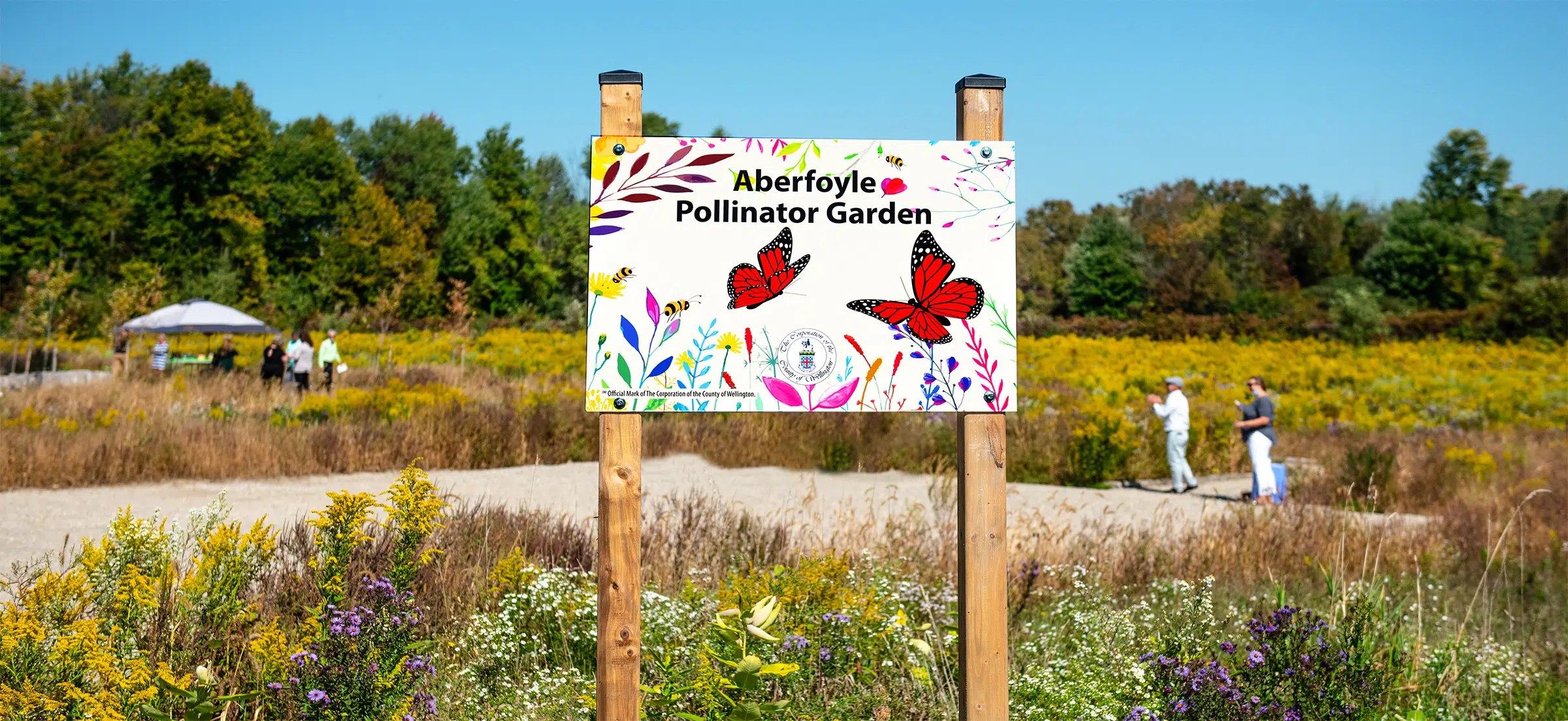supplied photo
MEDIA RELEASE WELLINGTON COUNTY
ABERFOYLE, ON- The County of Wellington officially opened the Aberfoyle Pollinator Garden today. As part of the Solid Waste Services Strategy, the preferred use of the County’s closed landfill sites is to include a continuation of ongoing naturalization efforts, with particular emphasis on establishing pollinator habitat.
Pollinator habitat has been promoted through the planting of flowering trees, shrubs, and wildflowers at the Riverstown landfill and at the Arthur closed landfill site in recent years. The Aberfoyle Pollinator Garden includes 30 varieties of trees, shrubs, perennials, and grasses, comprising of 1,788 plantings.
All species are attractive to either butterflies, moths, or bees for pollination or as a food source for larvae. These native plant species all have a relationship with specific insects, including Columbine Dusky Wing, Silvery Checkerspot, Painted Lady, Mulberry Wing, Winged Skipper, Arctic Skipper, Little Wood Satyr, Monarch Butterfly, and many more.
“Pollinating insects and birds provide a critically important ecosystem service,” said Warden Kelly Linton. “It’s estimated that one-third of food crops at least partially rely on insect pollination and 80% of wild flowering plants would not exist without pollination. Pollinators are essential to the agricultural sector, with managed and wild pollinators contributing an estimated $1 billion annually to Ontario’s economy.”
“Areas were created for water to collect inaccessible locations for insects, bare areas were established for native bees to tunnel and nest, and tree trunk sections were integrated as habitat for larvae,” commented Gregg Davidson, Chair of the Solid Waste Services Committee. “We have also created an outdoor classroom area for school and community groups to learn about the importance of pollinator species in our ecosystem.”
Studies on pollinator populations suggest there is a large decline in their numbers due to a variety of factors that impact their health. Continuing to establish pollinator food sources and habitat at the County’s closed landfill sites helps support these species locally throughout the County.







